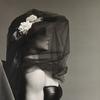After Raising $100 Million in Capital Campaign, San Francisco's Asian Art Museum Installs 15 Masterpieces in Renovated Galleries
- SAN FRANCISCO, California
- /
- December 11, 2019
This fall, the Asian Art Museum unveiled both floors of its transformed collection galleries, featuring new installations and 15 reimagined masterpieces redesigned with new interpretative elements and new digital tools for deeper engagement. Spread across two floors of the museum’s iconic Beaux-Arts building in the heart of San Francisco’s Civic Center, these masterpieces celebrate the highest artistic achievement of over 4,000 years of Asian history. The masterpieces form the core of the ongoing transformation of the Asian Art Museum visitor experience, offering current audiences new ways to look at familiar objects and first-time visitors a memorable introduction to the museum’s most delightful and unique artworks.
“From a lustrous jade cup enjoyed by Mughal emperors, to a glorious Burmese Buddha throne, to my personal favorite, an ancient Chinese bronze Rhinoceros fit for a king or queen, our masterpieces help structure every visit as one of discovery,” says Jay Xu, director and CEO of the Asian Art Museum. “They light a pathway through a large, extremely diverse collection, and underscore for everyone the fundamental pleasures of a visit to a museum like ours, which represents historic and living cultures connecting dots between the past and the present.”
Selected by the museum’s curators for their rarity, beauty, historical importance or cultural impact, these 15 artworks will punctuate the gallery experience with moments of surprise and delight, repose and reflection. They also serve as case studies, giving visitors useful tools for interpreting the other 2,500 works on view, drawn from the museum’s collection of more than 18,000 objects. Many function as introductions to a particular gallery, revealing themes that will be encountered in the surrounding artworks—or are themselves contemporary works building on these traditions The redesigned masterpiece installations feature distinctive casework, vibrant colors and special lighting, as well as seating for visitors to rest, reset and connect more deeply with an artwork (or a companion). Handheld placards with extensive content, interactive digital experiences on nearby tablets, and monitors with new videos created especially by the museum address the works in artistic, historical, religious or cultural contexts to nurture exploration and imagination. Developed in a collaborative effort by the museum’s renowned and award-winning education, digital, and curatorial teams, these tools are designed to appeal to different interests — from the history enthusiast eager to dive deep into the significance of the museum’s golden “338 Buddha,” to the artist curious about the innovative techniques of master ceramicists from Japan.
“Spotlighting our masterpieces makes an experience that may otherwise feel overwhelming more personal and memorable,” says Laura Allen, Asian Art Museum chief curator and curator of Japanese art. “These newly designed installations fulfill the needs of every type of visitor and style of learning. Continually updated elements — whether a new video, or a new slide show or text content on a tablet — allow us to showcase the dynamic nature of the museum’s collection and scholarship, so that in future years we can bring new perspectives to bear on our oldest “friends.” The enhanced masterpieces are part of a larger evolution and expansion of the Asian Art Museum, which moved from its first home in Golden Gate Park into San Francisco’s former main library in 2003.
Italian architect Gae Aulenti — best known for her work at Paris’s Musée d’Orsay — oversaw the initial conversion of the library building for the museum. This next-generation transformation comes from Thai American architect Kulapat Yantrasast of Los Angeles–based architecture studio wHY. Yantrasast, who has a successful track record in renovating and expanding museums, is celebrated for what he calls “architectural acupuncture” — subtle adjustments to existing floorplans and façades that harmoniously integrate new and old.
“It’s an exciting time for the Asian Art Museum because leaders here understand that their diversifying audiences mean they have more opportunities to connect and to inspire,” says Yantrasast. “By growing, by transforming the visitor experience in the smallest and the biggest ways, we can spark those opportunities during every visit and make sure that the museum truly is a destination for inspiration, whether you’re a student on a school trip or a Silicon Valley engineer looking for a creative kick.”
The opening of the refreshed collections galleries marks a major milestone in the museum’s ongoing transformation project, funded by the multiyear “For All” capital campaign which launched in 2017. The campaign has raised close to $100 million in private donations to refurbish classrooms and galleries, extend the museum along the busy Hyde Street corridor and further strengthen the museum’s endowment. Construction is scheduled to be completed in spring 2020, when the 13,000-square-foot Akiko Yamazaki and Jerry Yang Pavilion opens with a dynamic inaugural exhibition from Japanese digital art collective teamLab.
Highlights include:
- Imperial and Later China Lidded jar with design of a lotus pond, China; Jingdezhen, Jiangxi province Ming dynasty (1368–1644), Reign of the Jiajing emperor (1522–1566)
- Chinese Paintings Masterpiece Moment (A rotating series of paintings from the museum’s holdings; the first six months will feature 20th-century masterworks from Chang Dai-chien.)
- Korea Ewer with lotus-shaped lid, approx. 1050–1150, Korea, Goryeo dynasty (918–1392) Moon jar, approx. 1650–1750, Joseon dynasty (1392–1910) Japan The deities Brahma and Indra (Bonten and Taishakuten), approx. 730–750, Japan; Nara period (710–794) Japanese Ceramics Masterpiece Moment (A rotating series of works highlighting contemporary sculptural practices.)




10270x400_c.jpg)


100x100_c.jpg)






![Peter Paul Rubens (Flemish, 1577–1640), After Titian (Tiziano Vecelli) (Italian [Venetian], c. 1488–1576), Rape of Europa, 1628–29. Oil on canvas, 71 7/8 x 79 3/8 in. Peter Paul Rubens (Flemish, 1577–1640), After Titian (Tiziano Vecelli) (Italian [Venetian], c. 1488–1576), Rape of Europa, 1628–29. Oil on canvas, 71 7/8 x 79 3/8 in.](/images/c/e2/2e/Jan20_Rape_of_Europa100x100_c.jpg)







